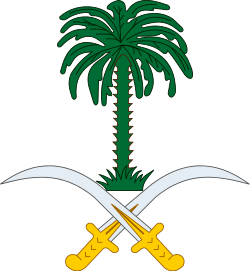Transport in Saudi Arabia
With the arrival of petrodollar over the period of time, Kingdom of Saudi Arabia has initiated many mega infrastructure development projects in the country, and extensive development of transportation network has followed suit to support various economic developments. As a result, the country now boasts an extensive transportation network.
Transportation in Saudi Arabia
There are several transportation modes in the Saudi Arabia.
Road transportation
Total:
221,372 km
Paved:
47,529 km (includes 3,891 km of expressways)
Unpaved:
173,843 km (2006)
Roads in Saudi Arabia vary from eight laned roads to small two laned roads in rural areas. The city highways and other major highways are well maintained, specially the roads in the capital Riyadh. The roads have been constructed to resist the consistently high temperatures and do not reflect the strong sunshine. The outer city highways such as the one linking from coast to coast are not as great as the inner-city highways but the government is now working on rebuilding those roads. In October 2013, a group of auto enthusiasts drove some 2000 km through Saudi Arabia in search of best driving road, and named the Jeddah - Taif - Al-Hada highway as motoring nirvana.[1]
Saudi Arabia encourages road transport as it has maintained one of the lowest petrol prices in the world, at $0.48 per gallon ($0.13 per liter).[2]
Some of the important inter-city highways include the following:[3]
[4]
- Dammam - Abu Hadriya - Ras Tanura Highway (257 km)
- Khaybar - Al Ola Highway (175 km)
- Mecca - Madinah Al Munawarah Highway (421 km)
- Riyadh - Dammam Highway (383 km)
- Riyadh - Sudair - Al Qasim Highway (317 km)
- Riyadh - Taif Highway (750 km)
- Taif - Abha - Jizan Highway (750 km)
- Medina - Tabuk Highway (680 km)
- Jeddah - Al Leith - Jizan Highway (775 km)
- Jeddah - Mecca Highway (80 km)
Sea transportation
Saudi Arabia has a well development sea transport network developed primarily to support the transport of petrochemicals. Saudi Ports Authority is the ports management organization in the country, overseeing the operations.
The major ports in the country are as follows;
Arabic Gulf
- Dammam
- Jubail
- Ras Tanura
- Khafji
- Khobar
- Ras Al-Zour (under construction)
Red Sea
Air transportation
There are an estimated 204 airports in Saudi Arabia (2003 est.).
Airports with paved runways
total:
71
over 3,047 m:
32
2,438 to 3,047 m:
13
1,524 to 2,437 m:
12
914 to 1,523 m:
2
under 914 m:
2 (2003 est.)
Airports with unpaved runways
total:
133
over 3047 m:
1
2,438 to 3,047 m:
5
1,524 to 2,437 m:
75
914 to 1,523 m:
38
under 914 m:
14 (2003 est.) (Saudia is the nation's flag carrier airline)
Heliports
9 (2009 est.)
Rail transport
As a result of over-reliance on road and air travel, the rail transport has not received a similar level of investment in Saudi Arabia. However, there are now plans to add more tracks and develop new railway routes.
The Saudi Railways Organization (SRO) is a state-owned company that operates Saudi Arabia's rail network.
SRO provides freight services on two main lines totalling 1018 km. These connect Riyadh with the port of Dammam on the coast of the Persian Gulf.[5] SRO passenger trains operate between Riyadh and Dammam.
Land Bridge will connect Jeddah with Dammam in the east.
There are plans to extend the network to the Red Sea port of Jeddah and, eventually to the borders of Jordan, Yemen, and perhaps all the way to Egypt.[6]
There is a large scale railway project Haramain High Speed Rail Project underway currently in the Western province, connecting Makkah with Jeddah and Madinah city. The primary objective of this railway line is to provide an alternative for the Muslim pilgrims travelling between the 3 cities.
Riyadh metro is a metro being built and will be done in 2017. Jeddah metro will start soon.
A recent addition is the Al Mashaaer Al Mugaddassah Metro also known as the Makkah Metro tram system, which was developed in Makkah city. This is a 18.1 kilometers (11.2 miles) track developed to shuttle a forecasted 8 million pilgrims between Mecca, Mount Arafat, Muzdalifa and Mina in the annual Hajj pilgrimage.
References
- ↑ http://www.crankandpiston.com/on-the-road/mclaren-12c-saudi-arabia-the-hidden-kingdom/
- ↑ http://www.csmonitor.com/World/Americas/2011/0913/World-s-cheapest-gas-Top-5-countries/Saudi-Arabia-0.48-per-gallon-0.13-per-liter
- ↑ Saoudi inter-city highways
- ↑ http://www.saudia-online.com/newsnov01/news06.shtml
- ↑
- ↑
| |||||||||||||||||||||||||||||||||||||||||||||||||||||||
| ||||||||||||||
